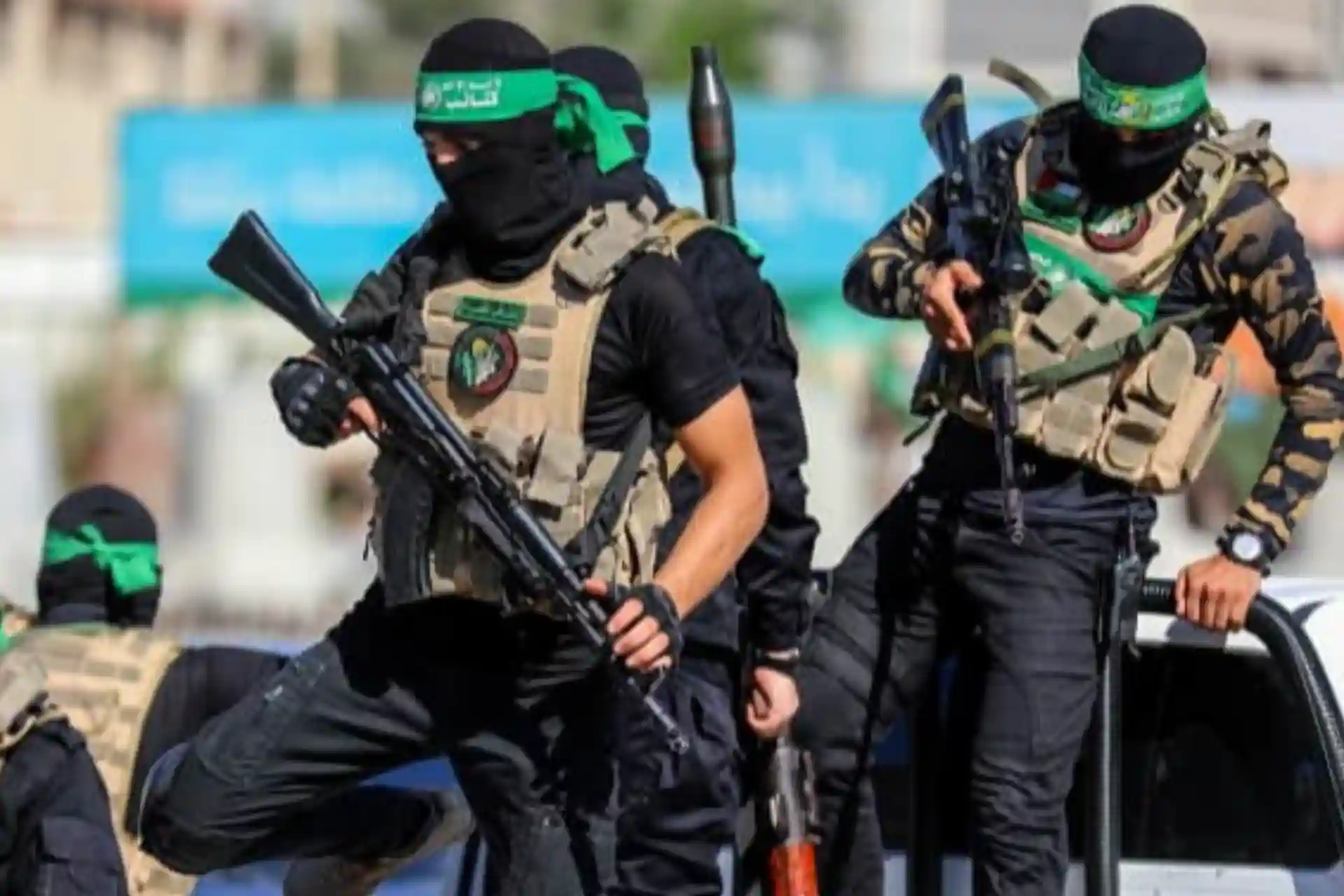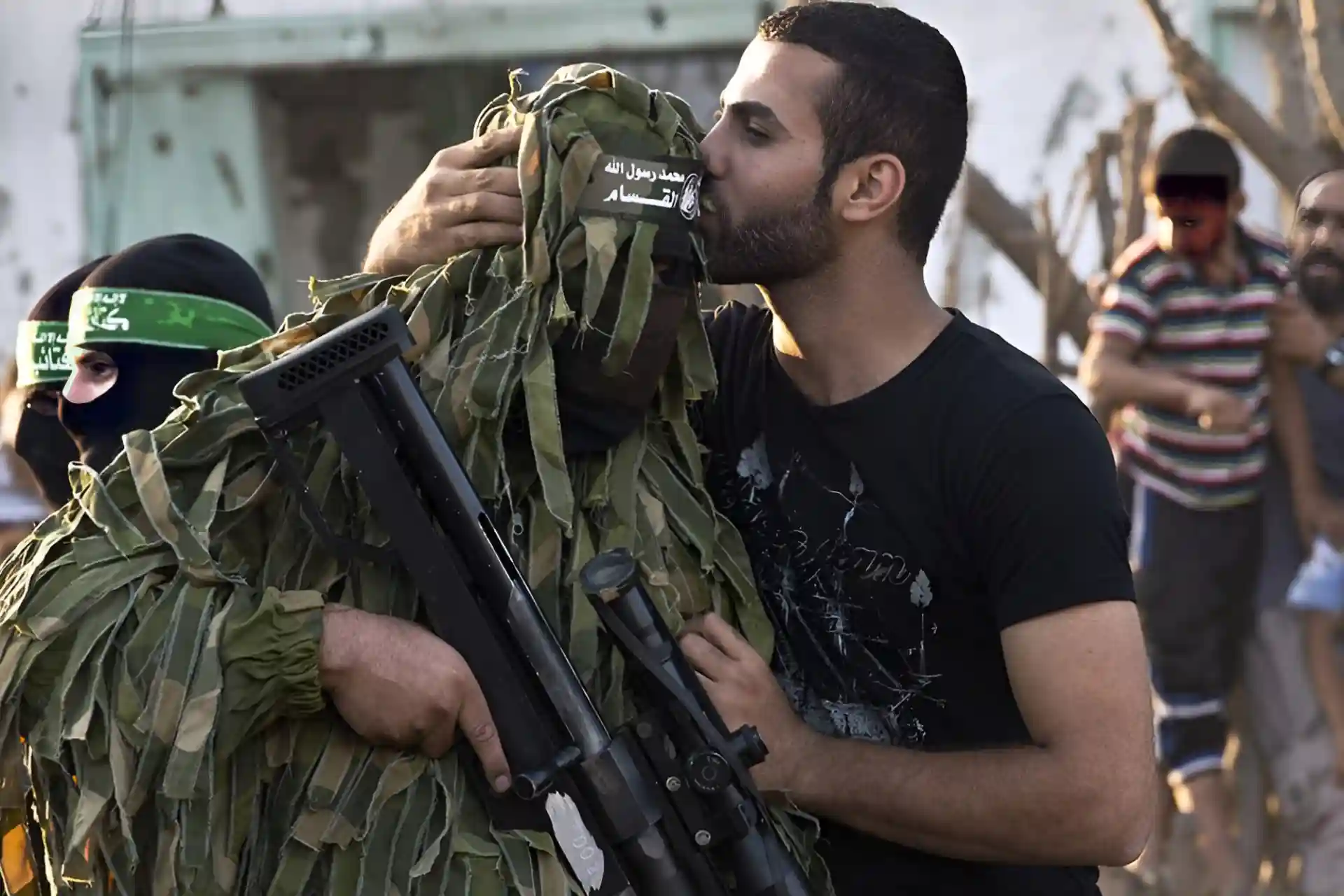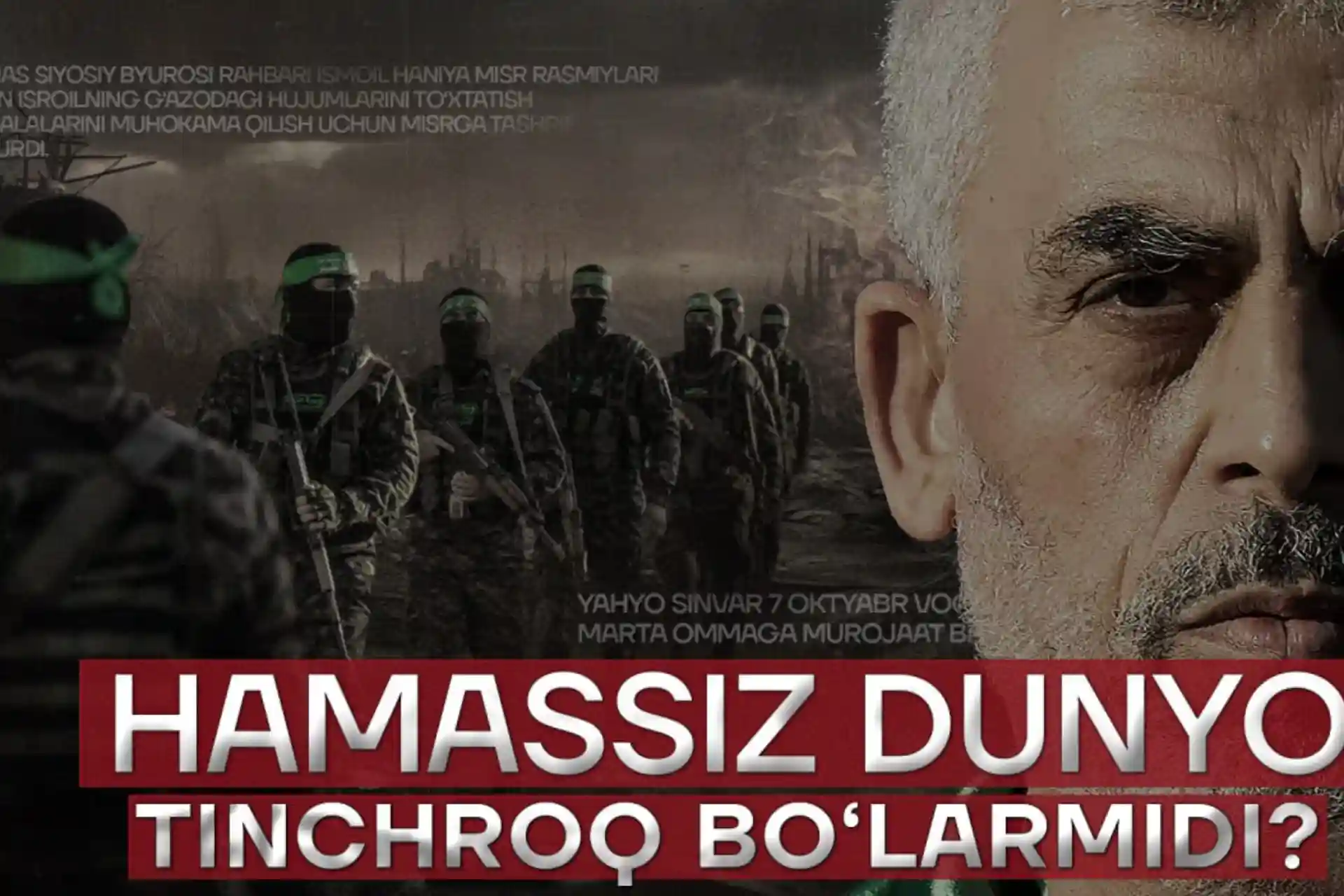Truths and Lies: Who Controls Hamas?
Truths and Lies: Who Controls Hamas?
The media misinterprets the working system of the Hamas leadership and creates a conflict between the former and current leaders of the movement - "moderate" Ismail Haniya and "extremist" Yahya Sinwar. Such opinions reveal a superficial understanding of the activities of not only the leaders of the resistance movement, but of Hamas as a whole. In fact , the decision-making process in Hamas is highly institutionalized.
The media misinterprets the working system of the Hamas leadership and creates a conflict between the former and current leaders of the movement - " moderate " Ismail Haniya and " extremist " Yahya Sinwar . In fact, the decision-making process in Hamas is highly institutionalized.
After the assassination of the head of the Hamas Political Bureau in Tehran, the movement's top advisory body unanimously elected Sinwar to replace Haniya . At the time of the assassination, Haniya was participating in peace talks with mediators on behalf of Hamas. Many analysts interpreted Sinvar's leadership as a sign of a change in the policies of Haniya and other high-ranking members of the Politburo .
N prejudices
Such thoughts are not only an act of resistance
leaders, but also shows a superficial understanding of the activities of Hamas as a whole. To see Sinwar's leadership as out of touch with the past is to follow the ambiguous, soul-splitting dichotomy of Western analysts of Palestinian leaders as " hawk and dove" or "moderate and hard " . This is the truth does not tell , but serves to hide more.
A factor that exacerbates this analytical deficiency is the overemphasis on Yahya Sinvar's psyche. Such an approach simply confines complex politics to individuals and makes Hamas decisions largely personal . In essence, relevant decisions are shaped by extensive internal debates, elections, complex discussions, consultations and institutional accountability.
Despite these flaws in the mainstream debate, it remains to be seen how Sinvar's tenure as head of the Politburo differed from Hania's tenure. Has there really been a sharp turn in the politics of the Islamic movement ?
Resist isolation
In order to appreciate the sudden change, it is useful to consider some similarities in the life paths of Haniya and Sinwar. Most notably , they both eventually became the head of Gaza and then the head of the Hamas Politburo. Born in refugee camps in Palestine in the early 1960s, Haniya and Sinwar also came into the world as refugees. This means that they have experienced various oppressions such as ostracism, dispossession and discrimination as children . Despite the harsh conditions, both leaders joined the Islamist movement in Gaza and faced further isolation and persecution . Haniya was exiled to Marj al-Zuhur, Lebanon in 1992 . Sinwar was arrested in 1988 and sentenced to four life sentences the following year. These troubles did not stop them from increasing their political knowledge, but also from their important role in the development of Hamas .
In the harsh conditions of exile in Marj al-Zuhur, Haniya coordinated cooperation with Palestinians outside of Hamas, established relations with " Hezbollah " , negotiations with Arab countries and the international community. increased the experience of conducting . This eventually culminated in a successful UN Security Council resolution demanding their return, and a year later a new era began in their lives . The experience of diplomacy and negotiations with Palestinian groups helped Haniya in his later career. In 2006, Haniya became the first democratically elected Prime Minister of Palestine. Although the collapse of this unity government led to brutal factional clashes and Israel's blockade of Gaza, it has worked for years to achieve national reconciliation as well as develop diplomatic ties.
Sinwar continued to develop the movement's counterintelligence capabilities during his imprisonment . He started this process in 1985 by establishing the "Security and Awareness Organization" known as "Majd". The purpose of the organization was to provide training on security and counterintelligence issues and to identify suspected collaborators. Sinvar in 1988 Twelve people were arrested on the charge of execution for treason . In prison, Sinwar continued his efforts to strengthen the movement's counterintelligence and build the capacity of Palestinian prisoners . He mastered the Hebrew language perfectly and read a lot. This knowledge served to advance the movement over time and cemented Sinwar's position as one of the leaders of Hamas in prison.
An important and well-known event in Sinwar's political experience is that in 2011 he played a decisive role in the negotiations for the release of more than 1,000 Palestinian prisoners, including the leader himself . These prisoners were released in 2006 in exchange for the Israeli soldier Gilad Shalit, who was captured by Qassam brigade fighters. Even during prison strikes and protests, Sinwar was able to carefully recruit and organize Palestinians from different factions. After his release, he was able to use these skills to negotiate with Israel and work with Palestinians from other factions .
Post-prison negotiations
Shortly after his return to Gaza, Sinwar was elected to the Hamas Politburo in 2012. Just five years later, in 2017, he succeeded Ismail Haniya as the head of the Gaza leadership. Sinwar's early years in Gaza are often seen as a period in which Hamas strengthened its internal ranks and waged public campaigns against cooperation with Israel, although this activity was very different from Majd's early days.
Although not full of hype and drama, Sinwar has been involved in a number of complex and transformative negotiations as head of the Gaza leadership.
A decade into Israel's siege of Gaza, daily life for 2 million Palestinians was about to get worse in 2017 when a series of decisions by Mahmoud Abbas exacerbated the economic impact of Gaza's isolation. In March 2017, the Ramallah-based Palestinian Authority (PA) cut the salaries of its employees in Gaza by up to 30 percent . In June of this year, the salaries of Palestinian prisoners "deported" to Gaza were completely canceled. Then, in a controversial decision by the Palestinian Authority and FATH leader Mahmoud Abbas, which was seen as a collective punishment measure, the sector's fuel supply was cut off by canceling the tax credit . This led to an energy crisis that reduced the daily electricity supply for Palestinians in Gaza from eight hours to four. As a result, the only power station in Gaza also failed .
In a move that surprised many observers, Sinwar reached an agreement with the former head of the Palestinian Authority's preventive security forces, Mohammad Dahlan, to resolve crises that have arisen since the political transition from Ramallah. Dahlan, like Sinwar, was born in the Khan Younis refugee camp, was one of the leading members of F ATH until he fell out with the party leadership in 2011, and later moved to the UAE. In the early years of the Gaza-West Bank divide, it was unthinkable for Hamas to strike a deal with the man who tried to undermine Haniya's Palestinian unity government. However, the domestic and regional situation demanded adaptation from the leadership of the movement , and Sinwar was ready to negotiate.
The Hamas-Dahlan deal achieved limited success, but it demonstrated two important aspects of Sinwar's tenure as head of the Gaza leadership: bridging differences with other sectors of Palestinian politics and society, and balancing foreign relations in the new regional context. In particular, through his close ties with the UAE and Egyptian governments, Dahlan secured the entry of a certain amount of fuel through the Rafah border. This was a significant achievement, as Egypt-Hamas relations were at their most tense at the start of Sinwar's first term as head of the Gaza leadership.
Over time, Sinwar was able to continue easing relations with Egypt in the months and years that followed. In 2018-2019, using the influence of the independent Palestinian people's movement known as the "Great Return" and the failure of the Mossad's attempt to enter Gaza in November 2018 to install surveillance equipment, the leadership of Hamas won a series of concessions that softened the impact of Israel's siege of Gaza. These include the easing of restrictions on crossing the Rafah border with Egypt, an increase in the number of trucks loaded with goods and aid entering Gaza daily, and the delivery of cash to pay the salaries of civil servants .
Sinwar's role in improving relations with other members of Hamas ' so-called "Axis of Resistance" after the Hamas leadership left Damascus during the 2012 Syrian uprising and civil war has been widely acknowledged. However, its role in improving and renegotiating relations with other regional powers has received little recognition.
Sinwar and his predecessors i
In order to understand how the movement and its leaders operate, two key concepts in Hamas' political vocabulary , mobilization and consultation, are essential. To understand the movement in general, or Sinwar's governance in Gaza in particular, it is necessary to consider these integral parts of Hamas' evolving institutional dynamics and power.
The term accumulation is commonly used to describe military gains made over time. It is also useful to consider this concept in terms of the political skills and experience that Hamas leaders have gained in dealing with the complexities of governance under siege, meeting humanitarian needs, enduring periods of regional isolation, building regional alliances and balances, and pursuing national reconciliation with other Palestinian factions. . Building a foundation for political success and military buildup often ensures consistency rather than dramatic change.
The consultation outlines best practices and structures within Hamas. At various levels of the movement, there are consultative bodies that act as accountability and advisory structures for the political leadership. Members are elected to include Palestinians from the West Bank, Gaza, the diaspora abroad, and in prisons. The Supreme Council , a high -level advisory body , appoints members to an independent body that coordinates and oversees the Politburo elections to ensure transparency. Although information about these structures is limited to the public, it is known that in an emergency such as the assassination of Ismail Haniya, the Supreme Soviet appoints a successor (Sinvar was unanimously elected).
The practice and structure of consultation is not limited to the political wing of Hamas. The movement's military wing, the Qassam Brigades, also has consultation procedures. In fact, after joining the Politburo, Sinwar served as a liaison between the military and political wings. Zahir Jabari y Majd , the founder of the Qassam Brigades in the North West Bank, explained that the centralization of the apparatus is wrong, because decisions about suspects are not in the hands of one person, they are multi-step processes and subject to further investigation by a separate "professional apparatus". According to Jabariyn, serious responsibility measures will be applied against the security personnel who mishandled the case.
According to the same dynamics, when a leader like Sinvar or Haniya makes an important decision, they do it not only by consulting with experienced people, but also feel responsible to their constituents within the movement and society in general . As the Gaza leadership and Politburo chiefs, Sinwar and Haniya worked together and often attended public meetings with various groups to promote national reconciliation. For them, national reconciliation was not only a priority of improving relations with the FATF and unifying Palestinian political forces, but also included bridging other political divisions, as well as solving social and economic problems in Gaza. All this was to prepare for the upcoming battle, to gather the necessary military strength, to ensure popular support and political unity. It appears that consultations are both top-down and bottom-up.
The statements of Sinwar and his two predecessors show how the accumulation of power and achievement ensured continuity between each new era. In a May 2013 interview, Khalid Meshaal outlined the following priorities for his final term: resistance; Making Jerusalem the center of the Palestinian cause; release prisoners; struggle for the right of return and increase the role of the diaspora in this struggle; Achieving national reconciliation between Palestinian factions and unifying Palestinian political forces around the idea of resistance; engaging the Arab and Islamic world; communicating with the international community at public and official levels; Strengthening the internal structures of Hamas and opening the movement to other Palestinian organizations, Arabs and Muslims.
Two months later, the overthrow of the Morsi government in Egypt radically changed the situation for Hamas changed . And it probably led the Politburo leadership to reconsider its strategy. Despite the challenges this posed for Hamas, just one year later in 2014, during Israel's 51-day war against Gaza, Qassam fighters entered Israeli territory at least five times, targeting its military bases and killing two soldiers during the war. Today, this experience and continuity can be observed in the statements of Hamas leaders . They explain that the purpose of the October 7 operation was to capture Israeli soldiers in order to exchange prisoners.
Common visions, messages and priorities continued with Hania as head of the Politburo. After Israel's war against Gaza in 2021 , This war, called the "Battle of the Sword of Jerusalem" by the Palestinians , coincided with the Palestinian uprising called the "Unity Intifada", which spread from Jerusalem to the West Bank, to the Palestinian citizens of Israel, and to Palestinian refugee communities in Lebanon and Jordan . Ismail Haniya gave a victory speech that showed the central role of continuity and experience in the movement.
Haniya described the battle as a "strategic victory" and declared that what happened next would be "unlike before," adding that it was a "divine victory, a strategic victory, a multifaceted victory" on the Palestinian national stage, the Arab and Islamic world, the global community and the international community.
On the eve of October 7 , Yahya Sinvar also gave a speech and said:
"In my estimation, within a short period of less than a year, we will have two choices before the occupation: either we will force it to implement international law, respect international decisions, withdraw from the West Bank and Jerusalem, end the settlements, release prisoners and ensure the return of refugees. we do
or we encourage this occupation to act contrary to the entire international order. We will expose the true face of the Zionists , sharply and strongly isolate them and put an end to their integration with the rest of the world . "
With that in mind, it's fair to ask whether Sinwar really is as unpredictable as analysts say he is. His statements also call into question the interpretation of Sinwar's rise as a complete break with the movement's past .
Hamas as mediator
The personality of Yahya Sinwar caused a stir in the Western (and even Arab) media. In general, these discussions of Hamas are often based on hearsay, innuendo, and unsubstantiated claims, which tend to exaggerate the differences between parts of the organization's leadership and categorize leaders into categories such as "diplomatic and negotiated moderates" and "military hawks." By looking at some aspects of Sinvar and Haniya's activities, we understand that although the personality and life path of each leader influence their thinking , this is only part of the overall action decision .
Based on the principles of consultation and aggregation, HAMAS is both a horizontal movement and a movement of institutions. Effective institutions such as the Shura Council helped the Movement not lose its footing in uncertain situations such as the assassination of Ismail Haniya.
It is the latest example of Hamas demonstrating a degree of structural mobility and flexibility unprecedented in its history of institution-building among Palestinian factions.
In such circumstances, significant differences between leaders can be a source of strength for action . Because it allows him to balance the sometimes competing demands of different interest groups. This is especially important in decision-making in the context of high levels of surveillance, the constant threat of assassination and imprisonment of their leaders, and continuous attacks on their structures and institutions.
All this does not deny that sometimes there are disagreements between the leaders of the movement . This is a factor that has existed since the organization was founded in 1987. However, Hamas is also a movement of institutions, procedures and accountability mechanisms. Consultation, aggregation, and balancing the needs of different interest groups have been the guiding principle. Evidence of this has been clear and consistent in the messages of the organization's leadership not only during the ongoing genocidal war, but throughout its 37-year history.
After the October 7 , 2023 Operation Al-Aqsa Flood and the subsequent turmoil in Gaza , more questions were raised about the identity of Hamas and Yahya Sinwar in particular. Many still refer to Sinwar as the unpredictable mastermind of the operation and claim that he alone has the power to launch an unprecedented operation against Israel . This is not to do Hamas any favors – nor is it a cover for blaming a single "rotten apple" for returning a "disarmed" Hamas to power. For some self-professed experts, using this explanation leads to a shallow understanding of the movement . For others, it is necessary to cover up Israel's military failures and replace the capture of Sinwar with "total victory" . If Sinwar is Hamas and Hamas is Sinwar, destroying one will end the other .
But the clear evidence we have shows that Yahya Sinvar's actions were not unexpected. Like his predecessors, he spoke openly and clearly about the direction of the organization. The signs have been visible everywhere at the official and lower levels for at least two years. The major powers were shocked because they underestimated and ignored the movement, not because they were deceived. The narrative surrounding Sinvar also gives the "experts" an opportunity to justify their superficial knowledge of the movement at best, or disingenuous analysis at worst.
What analysts need to know is that Hamas is a movement of institutions, and like any other mass movement, it unites different currents and political orientations that may disagree on tactics rather than strategy. The rule of the organization is continuity despite geographical dispersion and differing views on how to move forward. There have been heated debates and public disagreements, but they are no secret. This is consistent with the dynamics of an organization with robust and competitive internal elections.
Little of the information attributed to "anonymous sources close to Hamas" about internal dissension within Hamas or Sinwar's reorganization of the organization is substantiated. Perhaps, as a result of the ongoing war, the activities of the movement will change and, as a result, its structures will also change. However, until solid evidence emerges , it is reasonable for analysts to base their opinions on the many written sources, speeches, and interviews that shed light on the overly cryptic aspects of Hamas and its leadership. There is no reliable evidence that Sinwar completely changed the structure of the movement and centralized power around him. But there is ample evidence that Sinwar is not only a product of the movement, but the people who shaped it over the decades and who grew up politically with it, and the processes he helped set in motion.
In the future, after this devastating war ends , new information may emerge that will change the understanding of Hamas and contradict the current assumptions.
Hanna Alshaikh , PhD in History and Middle Eastern Studies, Harvard University



